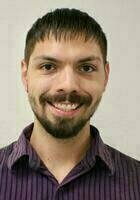All Human Anatomy and Physiology Resources
Example Questions
Example Question #102 : Human Anatomy And Physiology
Which muscle of facial expression is primarily responsible for drawing the angle of the mouth laterally as in smiling?
The masseter muscle
The risorius muscle
The buccinator muscle
The orbicularis oris
The orbicularis oculi
The risorius muscle
The risorius muscle is primarily responsible for drawing the angle of the mouth laterally as in smiling. Major functions of the orbicularis oris and orbicularis oculi muscles include the shaping of the lips during speech and closing the eyes, respectively. The masseter muscle is the main muscle for mastication.
Example Question #51 : Identifying Muscles Of The Trunk, Core, And Head
The sternocleidomastoid muscle __________.
bilaterally extends the cervical vertebrae and flexes the head
only extends the head
originates from the mastoid process
only flexes the cervical vertebrae
bilaterally flexes the cervical vertebrae and extends the head
bilaterally flexes the cervical vertebrae and extends the head
The sternocleidomastoid muscle bilaterally causes flexion of the cervical vertebrae and extension of the head. Unilaterally, it can cause lateral flexion and rotation of the head to the side opposite of the contracting muscle. It originates on the sternum and clavicle and inserts onto the mastoid process.
Example Question #52 : Muscles
Which of the following statements is incorrect?
The nasalis wrinkles the nose.
The orbicularis orbis closes the mouth.
The orbicularis oculi opens the eye.
The corrugator supercilii frowns the eyebrows.
The orbicularis oculi opens the eye.
The orbicularis oculi opens closes the eye. The muscle that opens the eye is called the levator palpebrae superioris.
Example Question #109 : Gross Anatomy
The muscle that spans the width of the forehead is the __________.
occipitofrontalis (frontal belly)
masseter
corrugator supercilii
temporalis
occipitofrontalis (frontal belly)
The occipitofrontalis covers the skull from the occipital bone to the frontal bone. It is a muscle of facial expression.
Example Question #103 : Human Anatomy And Physiology
Which of the following muscles does not depress the hyoid bone?
Geniohyoid
Sternohyoid
Sternothyroid
Thyrohyoid
Geniohyoid
Because it attaches superior to the hyoid bone, the geniohyoid does not depress the hyoid rather, it elevates it. The omohyoid (both inferior and superior bellies), the thyrohyoid, sternothyroid, and the sternohyoid muscles are collectively called the infrahyoid muscles, due to their attachments being inferior to the hyoid bone. Because of this attachment site, they depress the hyoid bone.
Example Question #51 : Identifying Muscles Of The Trunk, Core, And Head
A spike in the concentration of which of the following hormones stimulates ovulation in females?
Follicle-stimulating hormone
Progesterone
Luteinizing hormone
Estrogen
Testosterone
Luteinizing hormone
A spike in the concentration of luteinizing hormone (LH) leads to ovulation on day 14 of the menstrual cycle. This spike is known as the "LH surge" and is initiated by a positive feedback mechanism involving estrogen.
Follicle-stimulating hormone (FSH) is involved in the maturation of the follicle, but not ovulation. Progesterone functions in maintaining the endometrial tissue after implantation has occurred. Testosterone is not involved in the female reproductive cycle.
Example Question #52 : Identifying Muscles Of The Trunk, Core, And Head
What is the name of the muscle that surrounds the opening of the mouth?
Obicularis Oculi
Buccinator
Masseter
Obicularis Oris
Glossus
Obicularis Oris
The muscle that surrounds the opening of the mouth is known as the Obicularis Oris. The Obicularis Oclui surrounds the eye. The Masseter is connected to the mandible and responsible for chewing.The Glossus muscles are found inside the mouth and responsible for tongue movement. The Buccinator is found deep to the Masseter located on the cheek.
All Human Anatomy and Physiology Resources




